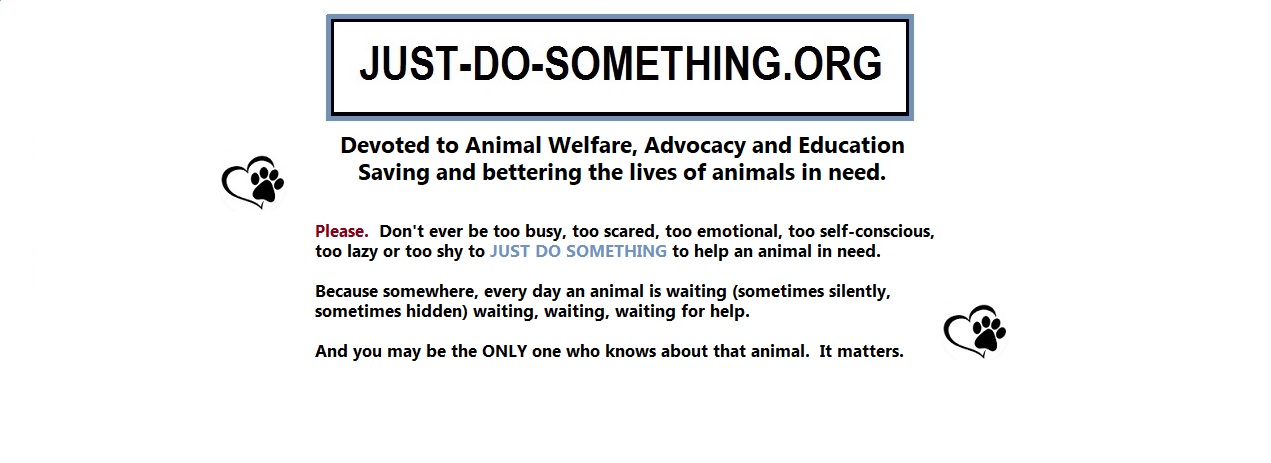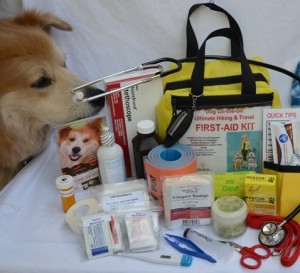July 17, 2014
Guest Blogger, Denise Fleck (sunnydogink.com)
Before you Comment, take a moment to review our guidelines!
Disaster Preparedness Tips To Keep Your Pets Safe
Hopefully you will never experience a fire destroying your home, yet you plan ahead — install fire alarms, smoke detectors and purchase insurance. You certainly hope never to be involved in a car accident, but you have airbags and wear a seat belt (and should safely restrain your dog as well). Being prepared makes sense as we can minimize potential injury to those we love. However, most people are not prepared for a major disaster. “Be Prepared” works for the Scouts, and it’s a motto we should carry into our adult lives. Planning ahead is the best way to keep yourself and your dog safe.
At The Very Least
- Place a Pet Alert Sticker near you front door recording how many and what type of animals live there. If you aren‘t home when tragedy strikes, trained professionals will seek out and help your pets.
- Designate a Pre-Arranged Meeting Place for your family and identify several Places That Can Take Your Pets. Red Cross Shelters do not permit pets, so organizations like the Surf City Animal Response Team, United Animal Nations, American Humane Association, Noah’s Wish and the Humane Society of the United States are working hard to train communities to set-up temporary animal shelters, but it could still be days before these facilities are in place. Making arrangements ahead of time with out-of-town friends and relatives is your best bet, but have a “Plan B.” Susan Keyes, President of the Southern California Animal Response Team says, “Long-term housing and care for pets is the area we have found people to be least prepared.” Check with pet day care and boarding facilities as well as your Veterinarian to see if they will accommodate during a disaster. Compile a list of hotels where pets are welcome and set aside one credit card just for emergency use. It’s also a good idea to have cash (in bills smaller than 20s) easily accessible as ATM Machines will not be working.
- Stash the following for each pet in an easy-to-carry backpack or crate (that way you’ll have the carrier to evacuate in):
- A two-week supply of food stored in an airtight container and a manual can opener if needed; water (for medium to large dogs, one gallon per day); medication. Remember to exchange these items regularly so they are fresh when needed.
- A water-proof container with vaccination & micro-chipping records and photos of your pet with your family as proof of ownership.
- Treats, toys, bedding, food & water dishes; Collars/harnesses and leashes; Litter, scoop & boxes for kitties; specialty items for pocket pets, birds, reptiles and amphibians; Disinfectant for cleaning crates, paper towels, flashlight with batteries, zip ties, garbage bags and a well-stocked Pet First-Aid Kit.
Where To Put It All
Even with the best laid plans, life happens, so consider storing your goods in several locations in the event they are un-retrievable when the ground shakes, the flames rise or the mud slides. Positioning items close to an outside wall in your home will allow easier access should buildings collapse and you need to rummage through rubble to get to your supplies. Also, stowing duplicate items in your car is a good idea.
Don’t Forget The Two-Legged Family Members
Stash food and other items for the humans including a battery or solar-powered radio, rubber-soled shoes and a flashlight near your bed so that you can help your pets and stay safe!
Hurricanes
The one good thing to be said about Hurricanes is that they are predictable — The National Hurricane Center tracks weather patterns and notes possible disturbances long before they pose a threat. It’s imperative that you monitor your local news channels and once a Hurricane Watch is issued, realize you have 24 – 36 hours before it hits, so do the following:
- Keep pets indoors and easily accessible should you need to suddenly pack them up and leave. Cats can sense impending doom and often hide, so get them into a carrier early.
- Stay tuned to news stations for evacuation routes and make sure you completely understand the plan.
- Have at least one week’s food, water and any medications stored for your pets and prep your house for the storm (board-up windows, stow away items that can blow such as patio furniture, secure gates, etc.).
A Hurricane Warning is issued when the storm is 24 hours away or less. Complete all preparations before the rains and high winds arrive, and stay in your home only if it is safe. If you evacuate, take Fido and Fluffy with you.
Wildfires
Once underway, Wildfires can consume millions of acres and blow in changing directions. For this reason, you should plan several escape routes for you and your pets in the event the flames block your path.
- Create a “fire break” around your home by clearing away vegetation, especially dead brush, about 30 feet from all structures.
- Use fabric, rope or leather leashes and collars. Nylon ones melt when heated and can badly burn your pet.
- Take all animals with you. Monitor your pets for burns and smoke inhalation. Knowing how to perform Rescue Breathing & CPR could save your dog’s life!
Earthquakes
Unlike most natural disasters, there is no advanced warning for an earthquake allowing no time for last minute precautions. In addition to covering the three steps above:
- Never position dog runs, crates or enclosures underneath objects that could fall during a tremor.
- Add a pair of bolt cutters to your disaster kit in case damaged cages or fencing need opening.
- Know where to turn off the gas to your house, barn or kennels.
- Include your pets in the family earthquake drill and make sure all family members know how to handle them realizing that a frightened pet may bite or scratch.
- If you board your pet, make sure the facility knows of your earthquake preparedness plans.
Should an earthquake occur, confine your pets. Dogs that escape sometimes return at mealtime, but there are no guarantees! Be prepared to handle cut and burned paws, know how to splint broken bones and stop bleeding in humans and animals alike — take a Pet First-Aid Class before you wish you had.
Floods
Flooding can occur in any part of the world and can even be confined to only your home or apartment building. Every year though hundreds of thousands of people are forced to evacuate due to rising water. Slowly rising water is usually due to rivers, streams or even a pipe leak in your home. Flash floods however can hit quickly caused by heavy rain or melting snow as well as failure to a dam or reservoir.
- Map out several evacuation routes for yourself and your four-legged family; don’t rely on only one which may be in the path of the floodwater. Head for the nearest high ground with your pets, and it is always better to err on the side of caution and evacuate early. If it is a false alarm, you and your family have practiced a meaningful drill instead of the real thing.
- Never leave any animal behind or certainly don’t tie up an animal if flood waters threaten. You can not anticipate how high water may rise, so even birds enclosed on high perches could perish.
- Remember that danger of disease can be an issue after a flood. Keep pets away from standing water. Have a good fresh supply of water on hand for everyone (1/2 gallon per day for small dogs; 1 gallon for larger animals) as even tap water may not be safe if contaminated water has entered the drinking supply.
Preparing for the worst may just prevent the worst from happening!
Denise Fleck is an award winning author and freelance writer. After extensive training and practice, she developed her own Pet First-Aid & CPR curriculum as well as a 5 month long Animal Care course for high school students in conjunction with the Burbank Unified School District. She has shared animal life-saving skills on CBS –TV’s The Doctors, Animal Planet and other shows. To complement her teachings, Denise created a line of Pet First-Aid Kits, posters and books for children teaching animal respect and care! Visit www.sunnydogink.com or call (818) 951-7962










Interesting post 🙂
Hello, I enjoyed reading through your articles. I wanted to write a little comment to support you. You have a really nice site and I will be back.
Hello there. I discovered your blog via a Google search. That is a really well written article. I’ve bookmarked it, and will check back to see your updates and additions! Thank you for the post.
I’ll certainly come back.
Hello there! I just wish to offer you a huge thumbs up for the excellent info you’ve got here on this post. I am returning to your site for more soon.